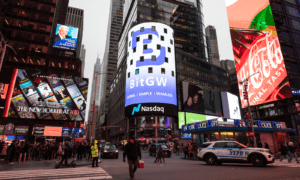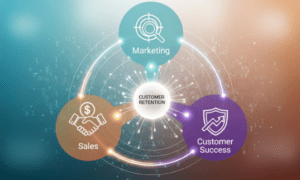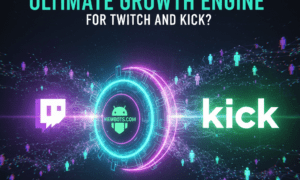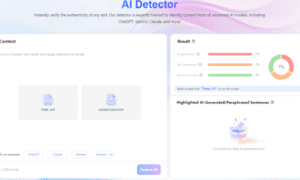Digital marketing has become the backbone of modern business strategies, transforming how brands connect with their audiences. Over the years, it has evolved from basic email campaigns and banner ads to a sophisticated ecosystem driven by artificial intelligence, social media platforms, and data analytics.
As the digital landscape continues to shift, businesses must remain vigilant, adapting to new tools and consumer behaviors. Entering 2025, the pace of change is accelerating, driven by emerging technologies such as augmented reality, the metaverse, and advancements in AI-powered solutions.
These innovations are not just trends; they are reshaping the rules of engagement and redefining customer expectations. However, with opportunities come challenges, particularly as privacy regulations tighten and consumer preferences grow more complex.
Marketers must balance the integration of cutting-edge technology with the demand for authenticity and ethical practices. The year 2025 promises a landscape where brands will compete not just on creativity but also on their ability to leverage new tools effectively while maintaining trust.
This article explores the evolution of digital marketing, highlighting past milestones and focusing on the trends expected to dominate the industry in 2025. By understanding these shifts, businesses can position themselves at the forefront of innovation and secure their relevance in an ever-changing market.
Key Historical Milestones in Digital Marketing
Digital marketing has undergone significant transformations since its inception, shaped by technological advancements and changing consumer behaviors. One of the earliest milestones was the rise of Search Engine Optimization (SEO) in the late 1990s, as businesses began optimizing websites to rank higher on search engines like Google.
This period also saw the emergence of Pay-Per-Click (PPC) advertising, offering a cost-effective way for brands to gain visibility online. The early 2000s marked the proliferation of social media platforms, including Facebook, Twitter, and LinkedIn.
These platforms revolutionized marketing, enabling brands to engage directly with audiences, build communities, and run targeted ads. The rise of mobile marketing followed, fueled by smartphones and mobile apps.
Businesses began creating responsive websites, custom mobile apps, and SMS campaigns to connect with users on the go. The 2010s introduced data-driven marketing, leveraging big data and social media analytics to personalize customer experiences and improve campaign efficiency.
Artificial Intelligence (AI) and marketing automation tools further enhanced targeting, forecasting, and content delivery. Video marketing also surged, with YouTube, Instagram, and later TikTok becoming essential platforms. As businesses look to stay competitive, the ability to build an app with AI has become increasingly important, allowing for smarter user interactions and more personalized experiences.
These milestones collectively shaped digital marketing as a dynamic and innovative field, setting the stage for current trends like AI, personalization, and immersive technologies.
Current Trends Shaping Digital Marketing
The digital marketing landscape is continually evolving, driven by shifting consumer behaviors and technological advancements. Video content remains a dominant force, with platforms like TikTok, Instagram Reels, and YouTube Shorts leading the charge.
Consumers increasingly prefer short, engaging video formats that deliver value quickly, making video a cornerstone of modern marketing strategies. Personalization has also become critical, with customers expecting tailored experiences based on their preferences and behavior. For example, incorporating event photography into your campaigns can add a personal touch by showcasing memorable moments that resonate with your audience, or showcasing products like an indoor trampoline to appeal to health-conscious individuals and families. . Leveraging data analytics, marketers can create hyper-targeted campaigns that resonate on a personal level, enhancing customer loyalty and engagement.
Artificial intelligence (AI) tools are revolutionizing the industry, automating tasks like content creation, customer support, and ad optimization. Chatbots, for example, provide 24/7 customer service, boosting efficiency and satisfaction. Integrating a coworking space management app can help personalize services and boost customer engagement through data-driven insights.
Additionally, voice search is reshaping SEO strategies, as smart devices like Amazon Alexa and Google Assistant gain popularity. Social commerce is another major trend, blending e-commerce and social media. Platforms like Instagram and Pinterest now enable users to shop directly within their apps, streamlining the buyer journey.
These trends illustrate the growing importance of seamless, interactive, and data-driven marketing strategies. Understanding the customer journey has become increasingly vital, as businesses map out every touchpoint from awareness to purchase, ensuring a cohesive experience across all channels. For example, integrating AI tools with a seamless delivery process ensures faster customer fulfillment while maintaining personalized communication, enhancing the overall customer experience. Businesses that adapt to these changes are better positioned to meet consumer expectations and stay ahead of the competition.
Emerging Trends for 2025
Digital marketing in 2025 will be shaped by groundbreaking technologies and shifting consumer expectations. AI-driven campaigns will dominate, as artificial intelligence becomes more sophisticated, enabling hyper-personalized content, predictive analytics, and real-time ad optimization. For businesses in niches like AliExpress Dropshipping, these advancements can streamline operations, improve targeting, and drive higher conversion rates. Businesses will use AI to automate repetitive tasks while enhancing decision-making.
Augmented Reality (AR) and Virtual Reality (VR) will revolutionize brand engagement. AR-powered virtual try-ons and VR experiences will enable consumers to interact with products and services in immersive ways, fostering deeper connections. This will be particularly transformative in sectors like men’s clothing, where AR can enable consumers to see how different styles and colors look on their own avatars.
Similarly, the rise of the metaverse will provide marketers with new opportunities for branding, advertising, and creating virtual storefronts in shared digital spaces.
As consumers increasingly prioritize sustainability, eco-conscious and ethical marketing will gain traction. Brands will need to demonstrate genuine commitments to environmental and social causes to resonate with their audience. Highlighting products like Lab Grown Diamond rings can effectively align with these values, offering a sustainable alternative in the luxury market.
Additionally, with privacy regulations becoming stricter, zero-party data strategies—where consumers willingly share data in exchange for tailored experiences—will take precedence over traditional tracking methods.
Lastly, voice and visual search will grow, thanks to advancements in smart devices and visual recognition technology. Marketers will need to optimize content for these non-textual search methods. The rise of blockchain in advertising will enhance transparency and tackle ad fraud, creating a more trustworthy digital marketing ecosystem.
Challenges in Adapting to New Trends
Adapting to new trends in digital marketing poses several challenges for businesses, requiring agility, innovation, and strategic foresight. Data privacy regulations are a primary concern as laws like GDPR and CCPA continue to evolve, demanding businesses to rethink data collection and usage practices.
Companies must invest in compliant systems while maintaining personalized marketing efforts, a delicate balance. Technological complexity is another challenge.
Emerging tools like AI, AR/VR, and blockchain often require significant technical expertise and financial resources. Smaller businesses may struggle to integrate these innovations without access to skilled talent or adequate budgets. Incorporating these technologies into a seamless CRM process can help businesses maximize their efficiency and better manage customer relationships despite resource constraints.
The ever-changing platform algorithms of search engines and social media can also disrupt marketing strategies. Staying updated and optimizing campaigns to align with these changes is resource-intensive.
While automation streamlines processes, it risks compromising authentic engagement with audiences. Consumers value human connection, and over-reliance on automation can lead to impersonal interactions, damaging brand loyalty.
Lastly, businesses face integration challenges, as incorporating new technologies with existing systems can be time-consuming and complex. Without a cohesive strategy, efforts to embrace trends may result in inefficiencies.
Adapting to trends demands continuous learning, flexibility, and a willingness to experiment, ensuring businesses remain competitive in a fast-paced digital landscape.
Case Studies and Industry Insights
To understand the practical application of emerging digital marketing trends, examining recent success stories can offer valuable insights. For example, Nike has embraced augmented reality (AR) to enhance the online shopping experience by allowing customers to virtually try on shoes.
This innovative use of AR not only improved customer engagement but also boosted conversion rates and reduced product returns. Similarly, Spotify’s Wrapped Campaign demonstrates the power of personalization in marketing.
By leveraging user data to create highly customized content, Spotify not only reinforced user loyalty but also turned its campaign into a viral phenomenon, driving organic sharing and attracting new subscribers.
Another noteworthy example is IKEA’s integration of AI and machine learning to optimize its advertising campaigns. Through predictive analytics, IKEA tailored its messaging to target specific customer segments, achieving higher click-through and engagement rates.
In the influencer marketing space, brands like Glossier have succeeded by partnering with micro and nano influencers to launch influencer marketing campaigns that build authentic connections with niche audiences. This approach has proven cost-effective and yielded higher ROI compared to traditional celebrity endorsements.
These case studies highlight the importance of innovation, data-driven strategies, and customer-centric approaches. Brands that successfully adapt to emerging trends are those that creatively integrate technology with human-centric storytelling.
Strategies for Businesses to Stay Ahead
To thrive in the rapidly evolving digital marketing landscape, businesses must adopt proactive and adaptive strategies. First, investing in continuous learning and upskilling is crucial.
Marketers should stay informed about emerging technologies, platforms, and tools like artificial intelligence, machine learning, and blockchain to remain competitive.
This includes attending workshops, online courses, and industry events to stay ahead of trends. Experimentation and early adoption of new platforms and technologies are also vital.
Businesses that test and integrate innovative tools—such as augmented reality (AR) for immersive customer experiences or zero-party data strategies for privacy-focused personalization—can gain a competitive edge.
Building a robust omnichannel marketing approach ensures consistency across multiple platforms, including social media, email, websites, and apps. This enhances customer engagement by providing a seamless experience, regardless of the channel.
Collaboration between technology and creativity within marketing teams is another key strategy. Utilizing AI for data analysis and automation can free up time for creative innovation, enabling teams to craft unique and engaging campaigns.
Finally, fostering adaptability and agility is essential. Businesses must be prepared to pivot strategies based on market changes and consumer behavior insights. By staying customer-focused, agile, and forward-thinking, companies can remain at the forefront of digital marketing in 2025 and beyond.
Conclusion
The evolution of digital marketing reflects the fast-paced advancements in technology and changing consumer behaviors. From the early days of basic SEO and banner ads to today’s sophisticated AI-driven campaigns and immersive AR/VR experiences, the digital landscape continues to push boundaries.
As we look toward 2025, businesses must embrace new trends, such as the rise of the metaverse, the increasing importance of zero-party data, and the growing focus on sustainability and ethical practices.
These shifts underscore the need for marketers to not only adapt but also innovate in how they connect with audiences in meaningful, authentic ways, using revenue intelligence to drive smarter decisions. However, this rapid evolution also brings challenges, including stricter privacy regulations, the complexities of integrating emerging technologies, and the need to balance automation with personalization.
Success in this dynamic field will require businesses to remain agile, continuously upskill, and prioritize customer-centric strategies. Ultimately, digital marketing’s future lies in its ability to merge creativity with technology, fostering deeper engagement and trust with consumers.
By staying ahead of trends and fostering adaptability, businesses can not only keep pace with change but also lead the way in shaping the next chapter of marketing. The future belongs to those who are willing to innovate, experiment, and embrace the unknown.

































